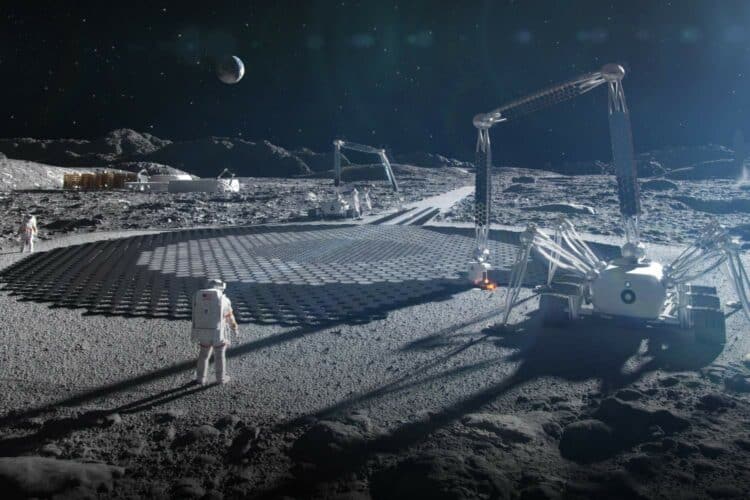NASA is formulating a visionary plan to build houses on the moon, with an ambitious goal set for 2040.
3D printers are key to NASA plans to build houses on the moon by 2040
This expedition, unlike the temporary visit of Apollo 17 astronauts half a century ago, envisages constructing houses on the lunar surface, potentially paving the way for a space subdivision for Americans, a recent New York Times report revealed.
Despite some scepticism within the scientific community regarding the timeline, seven NASA scientists remain optimistic about achieving this goal, provided the agency continues to meet its milestones.
To realise this vision, NASA intends to dispatch a 3D printer to the moon, which will fabricate structures from specialised lunar concrete.
This lunar concrete will be derived from the moon’s surface material, including rock chips, mineral fragments, and the notorious abrasive moon dust.
READ MORE – NASA expert panel finds 2-5% UFO cases ‘truly anomalous’
This initiative, dubbed ‘Project Olympus‘, is orchestrated by ICON in collaboration with NASA. The project aims to make use of the materials found on the lunar surface for construction, as a means of averting the astronomical cost and impracticality of transporting materials from Earth to the moon.
Get to know the company behind this astronomical feat
ICON, a construction technology firm based in Austin, Texas, has been a pivotal player in this endeavour.
Having received funding from NASA since 2020, ICON has been progressing with the space-based construction system under ‘Project Olympus’.
Although the plans are still in the conceptual phase, renowned architectural firms like SEArch+ and Bjarke Ingels Group have been enlisted to formulate design concepts for lunar houses.
The project’s methodology relies heavily on 3D printing technology, which has proven its efficacy in constructing homes on Earth, for example, in Austin’s Community First! Village.
The technology is acclaimed for its cost-efficiency and rapid construction capability. However, transitioning this technology for off-world construction presents unique challenges attributed to the starkly different lunar environment.
ALSO READ – NASA’s James Webb telescope captures a star-filled image of ‘Pillars of Creation’ [photo]
One of the initial phases of this mission, under the Artemis program, was initiated last November with the launch of Artemis I, which was followed by a scheduled human-crewed mission, Artemis II, in November 2024.
The program plans for a human landing on the moon by Artemis III, followed by two more crewed missions before the decade’s end.
These missions are seen as stepping stones towards the broader objective of lunar habitation.
One of the crucial elements of this project is to develop a lunar concrete that can withstand the harsh conditions of the moon, especially the extreme temperatures and the abrasive nature of lunar dust.
Tests are ongoing to simulate lunar concrete using moon dust analogues on Earth, aiming to devise a robust construction material for building on the moon.
DID YOU KNOW? – Jupiter was closest to Earth in 59 years, here’s how it looked
The overarching aim of this project transcends beyond the moon. Establishing a base on the moon is perceived as a layover for future missions to Mars. The lunar base could provide essential resources like rocket fuel, potentially sourced from the moon’s water, facilitating the Mars expeditions.
As NASA and ICON propel forward with ‘Project Olympus’, the anticipation builds up for a new era of space habitation.
Although the realisation of lunar houses is still within the realms of renderings and simulations, the collaborative efforts between NASA, ICON, and other stakeholders are gradually edging closer to turning this cosmic dream into a reality.






